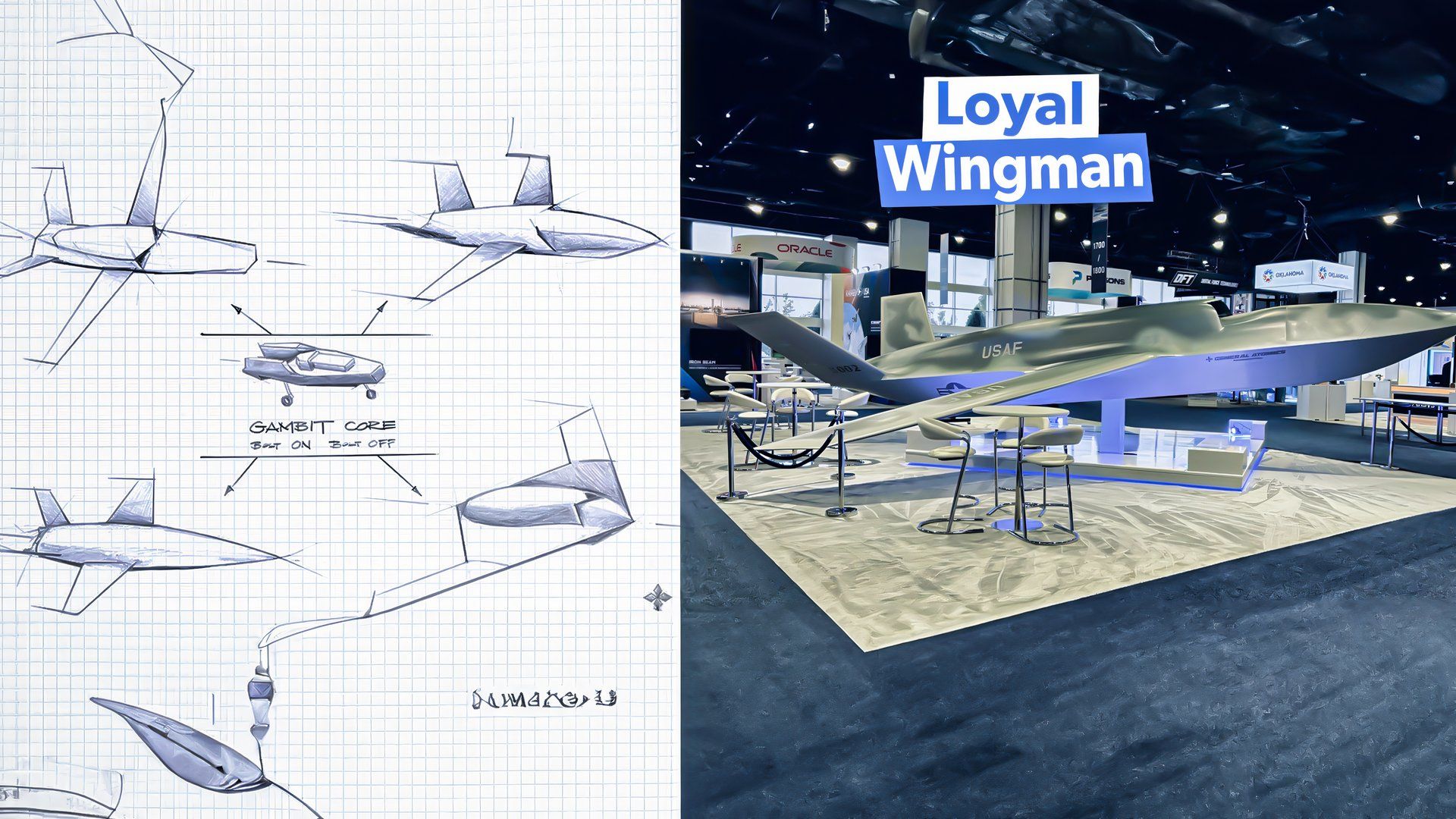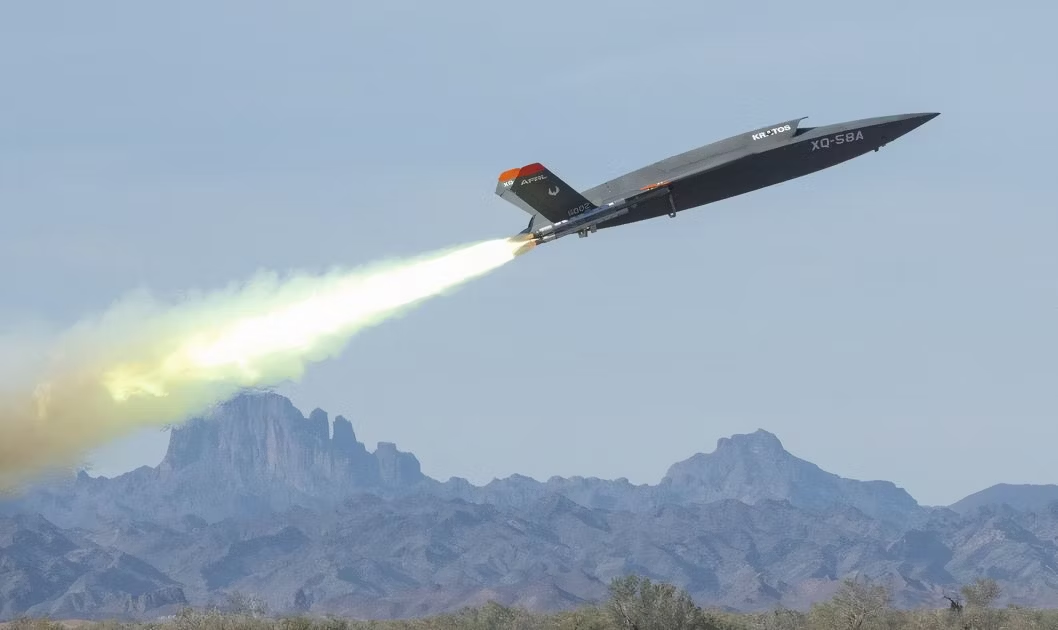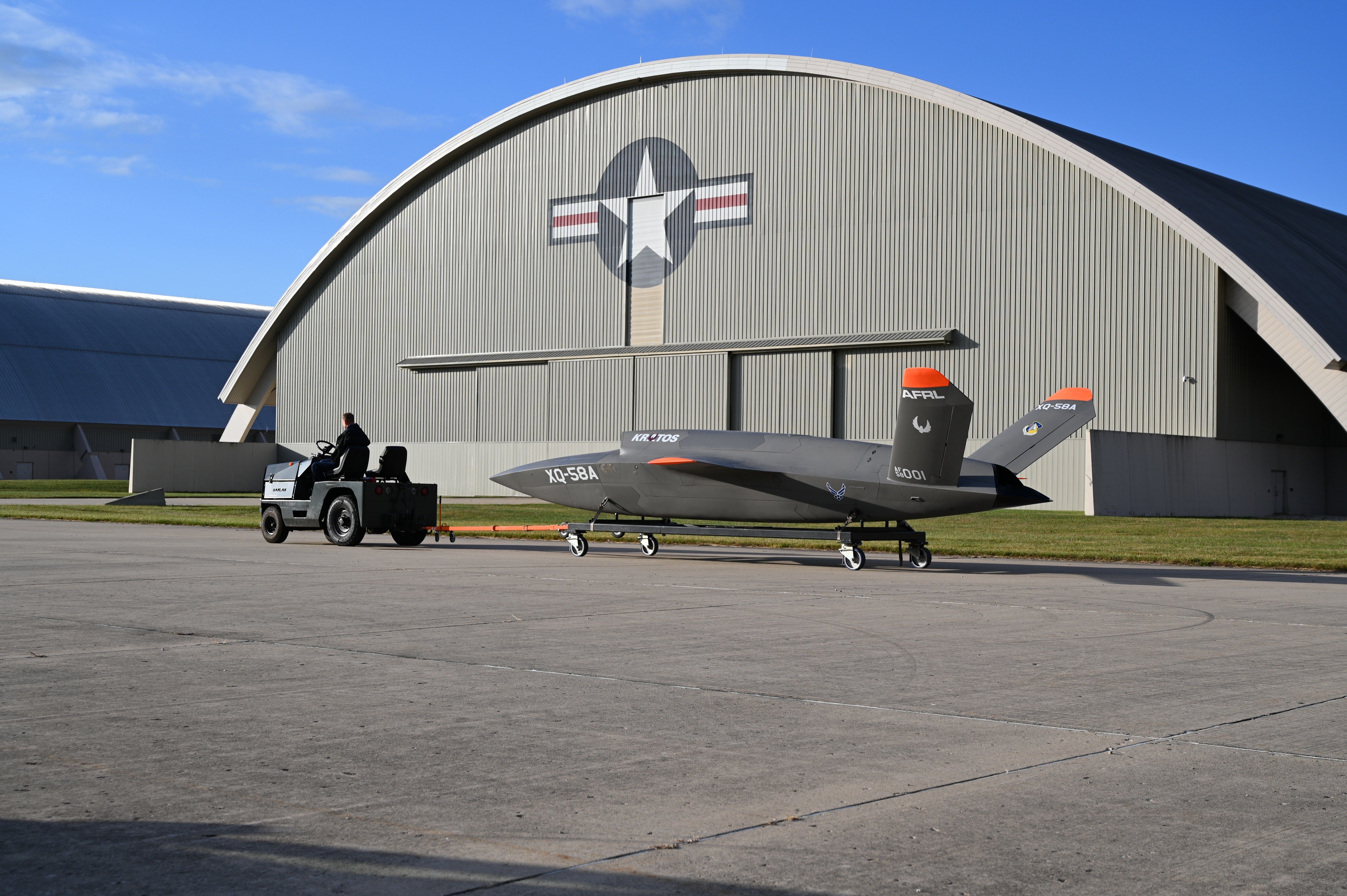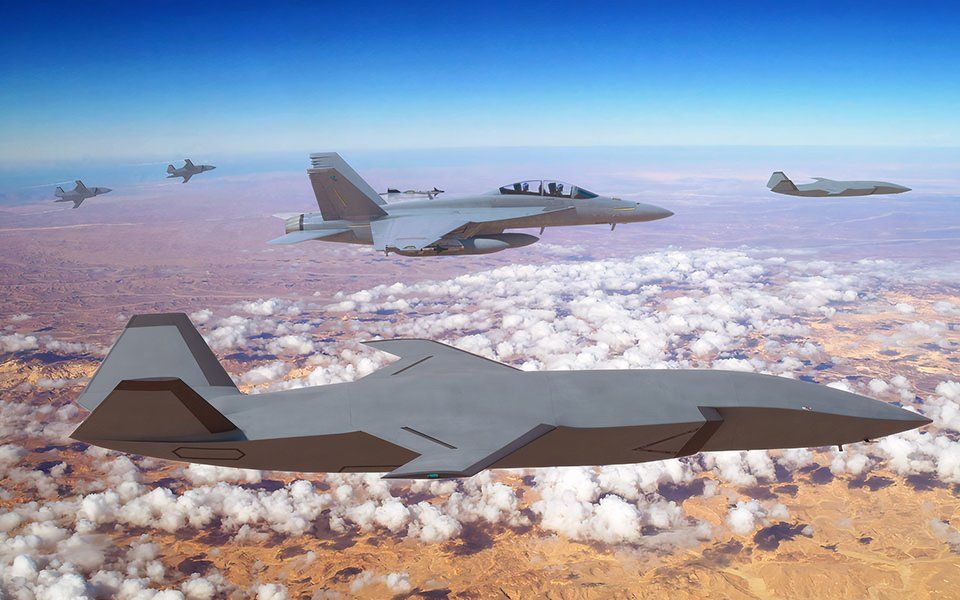The USAF Collaborative Combat Aircraft (CCA) program, often referred to as the “Loyal Wingman” initiative, is a cutting-edge project aimed at integrating unmanned aerial vehicles
(UAVs) into the U.S Air Force
operational framework. The emergence of “robot wingmen” is shaping the future of aerial combat, with competing systems like the Kratos XQ-58A Valkyrie, General Atomics’ XQ-67, and ![]() Boeing’s
Boeing’s
MQ-28 Airpower Teaming System (ATS) taking center stage. The program is designed to enhance the capabilities of manned aircraft by deploying drones that can operate autonomously alongside them, effectively serving as “wingmen” in combat scenarios.
1
AI built-in
Loyal Wingman drones are envisioned to perform various missions, including intelligence gathering, surveillance, reconnaissance, and even direct combat support. By leveraging advanced artificial intelligence, these drones can operate in concert with piloted aircraft, sharing real-time data and adapting to dynamic battlefield conditions.
“The increment-one CCAs will act as missile trucks that haul air-to-air missiles for manned fighters. Increment two will kick off next year, and while requirements are still being worked out, are slated to add mission sets like electronic attack, resilient sensing, and different weapons.”
– Maj. Gen. Joseph Kunkel, Air Force director of force design, integration and wargaming.
This collaborative approach increases situational awareness, reduces risk to human pilots, and enhances mission effectiveness.
Recent advancements in drone technology
, along with growing concerns about future aerial combat environments, have underscored the necessity of such systems. By combining manned and unmanned platforms, the CCA program aims to maintain air superiority while optimizing resource allocation and enhancing overall combat capabilities. As the USAF continues to develop the Loyal Wingman concept, it represents a significant step toward a more integrated and efficient force in modern warfare.
2
The Kratos XQ-58
Flexible and adaptable
The program emphasizes flexibility and adaptability, enabling the integration of different drone types to suit specific mission requirements. Additionally, Loyal Wingman drones can be rapidly deployed and configured for various roles, making them a versatile asset in the Air Force’s arsenal. The Skyborg and Valkyrie are two key models in the USAF’s Collaborative Combat Aircraft (CCA) program. Skyborg is an artificial intelligence-driven drone designed to operate autonomously alongside manned aircraft, adapting to mission needs and battlefield dynamics. It emphasizes flexibility and quick deployment for various roles. The Valkyrie, developed by Kratos, is a high-speed, stealthy
drone intended for combat and support missions. Both models enhance operational capabilities, allowing pilots to have greater situational awareness and risk mitigation. Together, they represent a significant advancement in integrating unmanned systems into modern military strategy, enhancing air superiority and combat effectiveness.
XQ-58 Performance Specifications:
- Speed: 652 mph
- Range: 3,500 miles
- Ceiling: 44,997 ft
- Max weight: 6,000 lbs
3
The General Atomics XQ-67
Modular design allows for various payloads
The XQ-67 is an unmanned aerial vehicle built by General Atomics, in competition to be the “Loyal Wingman,” supporting manned aircraft by providing enhanced reconnaissance, surveillance, and strike capabilities. With a focus on high-speed and long-range operations, the XQ-67 incorporates stealth features to minimize radar
detection. Its modular design allows for various payloads, enabling it to adapt to different mission requirements. The drone is expected to operate autonomously or in coordination with human pilots, enhancing overall mission effectiveness and providing tactical advantages in modern warfare scenarios. Its development reflects ongoing innovations in unmanned systems.
4
Boeing’s MQ-28 “Ghostbat”
Stealth with low radar cross-section
The Boeing MQ-28, or Airpower Teaming System (ATS), is an unmanned aerial vehicle designed to assist manned aircraft in various combat missions. It features a wingspan of approximately 30 feet and is optimized for stealth with a low radar cross-section. The MQ-28 can carry various payloads, including sensors
and munitions, and has a range of around 2,000 nautical miles (3700 km). Powered by a turbofan
engine, it can reach speeds of over 600 knots (1,100 kmh).
The drone employs artificial intelligence for autonomous operations and real-time data sharing with manned platforms. Its modular design allows for quick adaptation to different mission profiles, making it a versatile asset for modern air forces, enhancing situational awareness and increasing operational effectiveness in complex environments.
5
XQ-58A Valkyrie on the high seas
Enhancing the US Navy’s unmanned aircraft capabilities
The development of the prototype has shown such promise that US Navy
also acquired 2 “Loyal Wingman” drones for testing in 2023.
The Navy is currently developing its sixth-generation Next Generation Air Dominance (NGAD) program, which officials have said will be a family of manned and unmanned systems, with a manned fighter currently known as F/A-XX operating as the centerpiece. The Navy plans to employ the systems in what it calls a manned-unmanned teaming concept.
The US Navy has acquired two XQ-58A Valkyrie drones for $15.5 million from Kratos Defense. The UCAV’s are anticipated to enhance the Navy’s unmanned capabilities with high-speed and long-range mission capabilities. Their ability to operate autonomously or alongside manned aircraft is a valuable force augmentation for the Carrier Air Wing
. This purchase is part of the Navy’s strategy to integrate advanced technologies into its operations, positioning the Valkyrie as an asset in aerial combat. The drones’ versatility aims to support future military strategies and improve operational effectiveness across various combat mission sets.
The competition between these systems highlights the race to develop
effective, cost-efficient solutions supporting manned aircraft while engaging in combat operations independently. The integration of such technologies
is expected to revolutionize aerial tactics, making them more versatile and responsive to dynamic battlefield environments. As both the XQ-58A and ATS undergo testing and development, their success will likely influence military strategies and procurement decisions in the coming years, as nations look to enhance their aerial capabilities amid evolving threats. The future of aerial warfare appears increasingly reliant on the synergy between manned and unmanned systems, marking a significant shift in military
operations.




